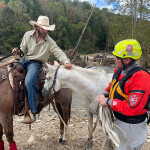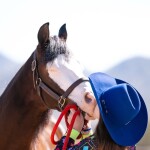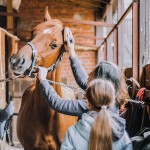If you've spent any time caring for domesticated horses, you know how important hoof care is to their overall health. Regular trimming by a skilled farrier is essential to prevent overgrowth, splitting, or imbalance. But that might leave you wondering... how do wild horses, with no human intervention, manage to keep their hooves in check?
The answer lies in their lifestyle, environment, and sheer adaptability.
Constant Movement is Key
Unlike domesticated horses, wild horses roam vast areas and are almost always on the move. They travel miles each day in search of food, water, and shelter. This constant movement plays a crucial role in natural hoof maintenance. Each step across the ground gradually wears the hoof wall down, keeping it at an optimal length.
Think about it—wild horses might cover anywhere from 10 to 20 miles every single day. Over time, small amounts of hoof material are worn away with each step, mimicking the work of a farrier. The sheer act of walking is their natural hoof-trimming strategy.
The Importance of Varied Terrain
The environment wild horses live in also contributes to their well-maintained hooves. They encounter a variety of terrains—rocky paths, sandy flats, muddy trails, and grassy plains. Each of these surfaces plays a role in different types of wear:
- Rocky terrain acts like a natural nail file, gradually smoothing and shortening the hooves.
- Hard-packed dirt provides a stable yet abrasive surface for consistent wear.
- Soft soil or sand helps balance out irregular edges, ensuring even wear across the hoof.
This varied terrain ensures that the wear is even, much like how domesticated horses need balanced trimming to maintain proper hoof shape and prevent issues like lameness.
Why Don't Wild Horses Need a Farrier?
One of the primary differences between wild and domesticated horses is their overall lifestyle. While domesticated horses are often confined to stables or limited pastures, wild horses roam freely across diverse landscapes. This freedom and the constant wear and tear on their hooves mean they typically don’t need the intervention of a farrier.
Domesticated horses, by contrast, may face overgrown hooves if they aren't consistently trimmed. Without natural wear from varied surfaces or regular movement, their hooves can become too long, uneven, or cracked, leading to discomfort or even serious health problems.
Human Care Vs. Nature's Design
It's fascinating to see how wild horses thrive without human care—a powerful reminder of how animals adapt beautifully to their environments. However, this doesn't mean we should strive to replicate this system for our domesticated horses. Life in captivity comes with its own set of challenges, and their hoof health is in our hands.
Understanding how wild horses naturally trim their hooves can inspire us to look closer at our horses’ needs. Are we giving them the opportunity to move regularly? Are we providing an enriching environment with hard ground or varied textures? While not all horses can live as wild ones do, small changes can often mimic nature’s hoof maintenance in a safe and controlled way.
Wild horses offer a glimpse into the efficiency and beauty of nature. Their hooves are a product of a lifestyle filled with constant movement, exposure to varying terrains, and centuries of adaptation to their environment. While we can't entirely replicate these conditions for domesticated horses, understanding the “how” behind wild hoof care can help us take better care of our own.
What do you think about this balance between nature’s design and human intervention? If you're curious about how you can improve your horse's hoof care routine, feel free to share your thoughts in the comments or reach out to your trusted farrier. After all, happy hooves make for happy horses!








